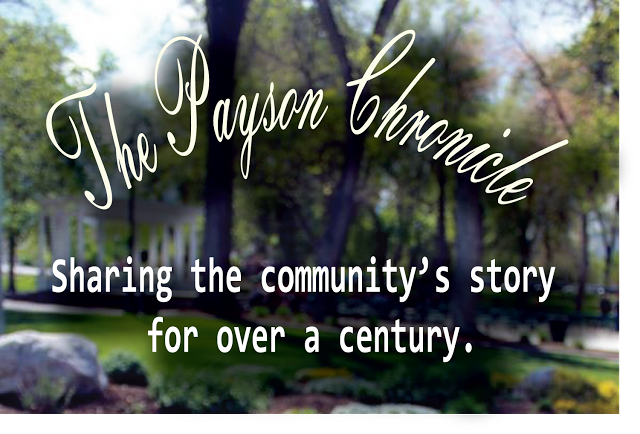PHOTO: Glen, Alice, Hannah, and Alma Willey (pictured left-right), circa 1929.
Michael Robertson was fourteen years old in the summer of 1968 and pining to put his hands to the plough. Payson educator, civic worker, and builder Stanley Wilson had the projects in town to assist. But adolescence has its limitations.
“I needed something to do,” Mr Robertson remarked in January 2022 as he gazed upon his time and roots in Payson. “I wasn’t yet 16 and could not get a real job and there wasn’t enough work with Stanley Wilson to keep me busy. So I came up with the idea to tear down the old Willey home at 6th East 4th North.”
The brick home, with its south-facing front porch set back from gated shrubbery, held ancestral significance to Michael, as well as Payson City. Its original occupant was James Pace, after whom the central Utah town was named.
Since the 19th century, Fourth North Street has been known by locals as Cow Lane. The road officially adopted the moniker in 1997 upon the urging of Payson preservationists.
“400 North is a historical Street,” reads a marker the local historical society and Payson City had made in the mid 1990s to formalize the change. “It was the route used by pioneers entering the valley Oct. 20, 1850. James Pace was the captain whom the city of Payson was named for. The street was given the name of ‘Cow Lane’ by early settlers as it was the street cows used traveling to pastures on the east and west of town. In 1888 it became the street herds of cattle and sheep used to get to the summer and winter ranges. It was used by herds over 100 years. It is still known by local residents as ‘Cow Lane’ today.”
By the early-to-mid-20th Century, the Willey family would come to reside in the notable brick home on Cow Lane. Michael Robertson’s mom, the late Alice Willey Robertson, was raised there with her brothers Glen and Alma and their parents, Joseph Angus and Hannah Jones Willey.
“I visited it as a young child,” said Mr Robertson. But by the summer of 1968, “Grandpa and Grandma Willey had moved out of it several years earlier. It was now vacant, run down and in the middle of the pasture with cows walking through it.”
Repurposing was in vogue in late-60s America. “At this time it was popular to build new homes with old brick. So I got permission to dismantle the home, harvesting the brick and the wood. I cleaned up all of the bricks and stacked them in several piles the size of pallets. I took out all of the nails from the boards and stacked them according to size. It took me several months. Each day I would ride my bike the six blocks to the old house and work there for the day. I packed my own lunch.”
The work gave him personal satisfaction and money to fill his pockets.
“I enjoyed the project, working at my own pace and being my own boss. After the project was complete, I found a buyer, or a buyer found me, and paid me 5 cents per brick. I don’t remember how many bricks I sold, but I do remember that it was a sizable amount of money for me and that I felt greatly rewarded for my efforts.
“Now all I have are photos and memories and the satisfaction of a job well done.”
PHOTO: The former Pace and Willey home, located near 6th East and 4th North (Cow Lane), Payson. “James Pace, the founder of Payson, once owned this old house,” noted Michael Robertson, a Willey family descendant whose careful work dismantling the home in 1968 led to its materials fulfilling uses in buildings elsewhere. “At one time it had beautiful walnut trees and hedges of yellow rose bushes. It had a swing in the walnut tree that I used to swing on.”
PHOTO: James Pace (1811-1888)








No comments:
Post a Comment
Note: Only a member of this blog may post a comment.